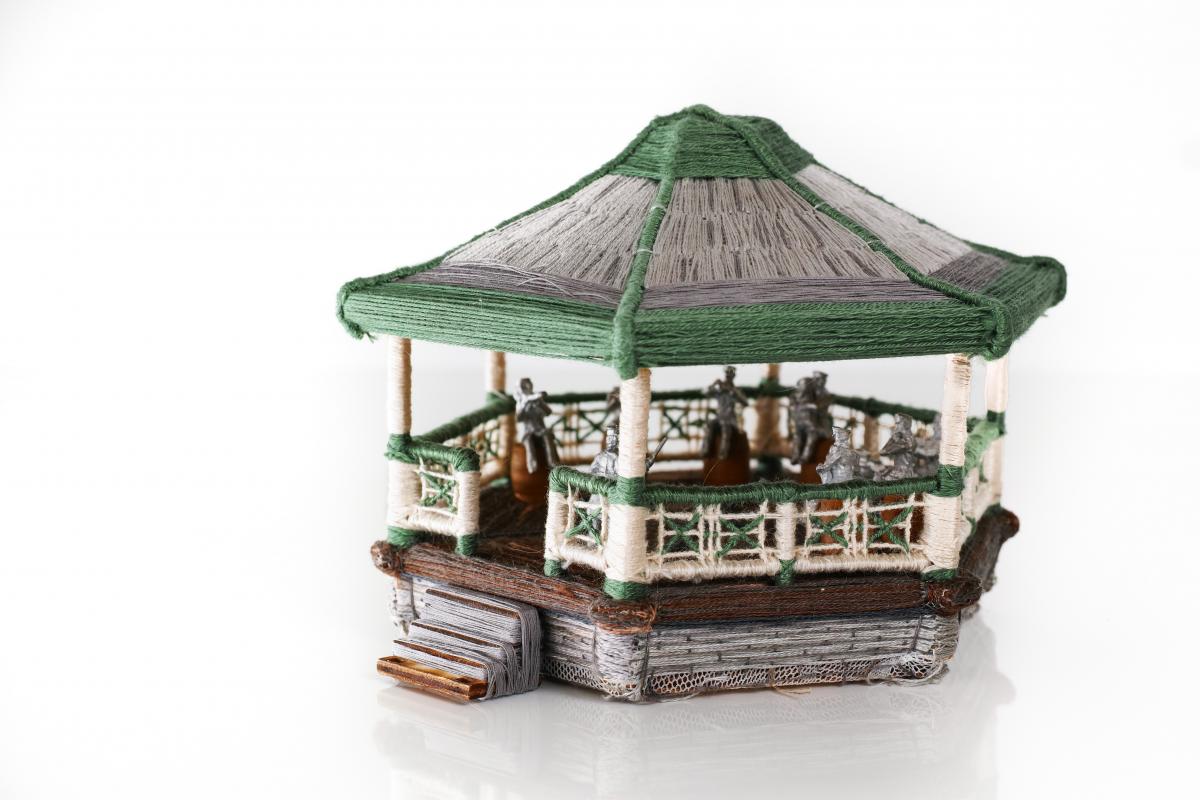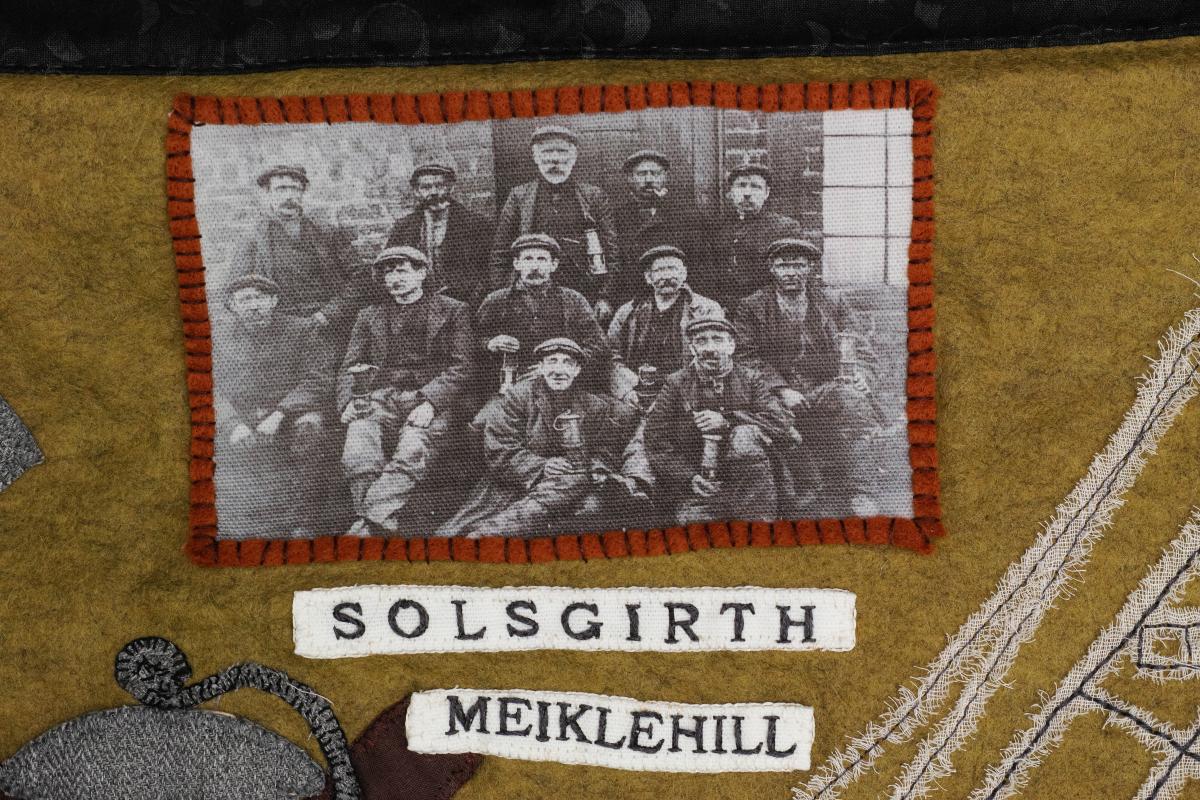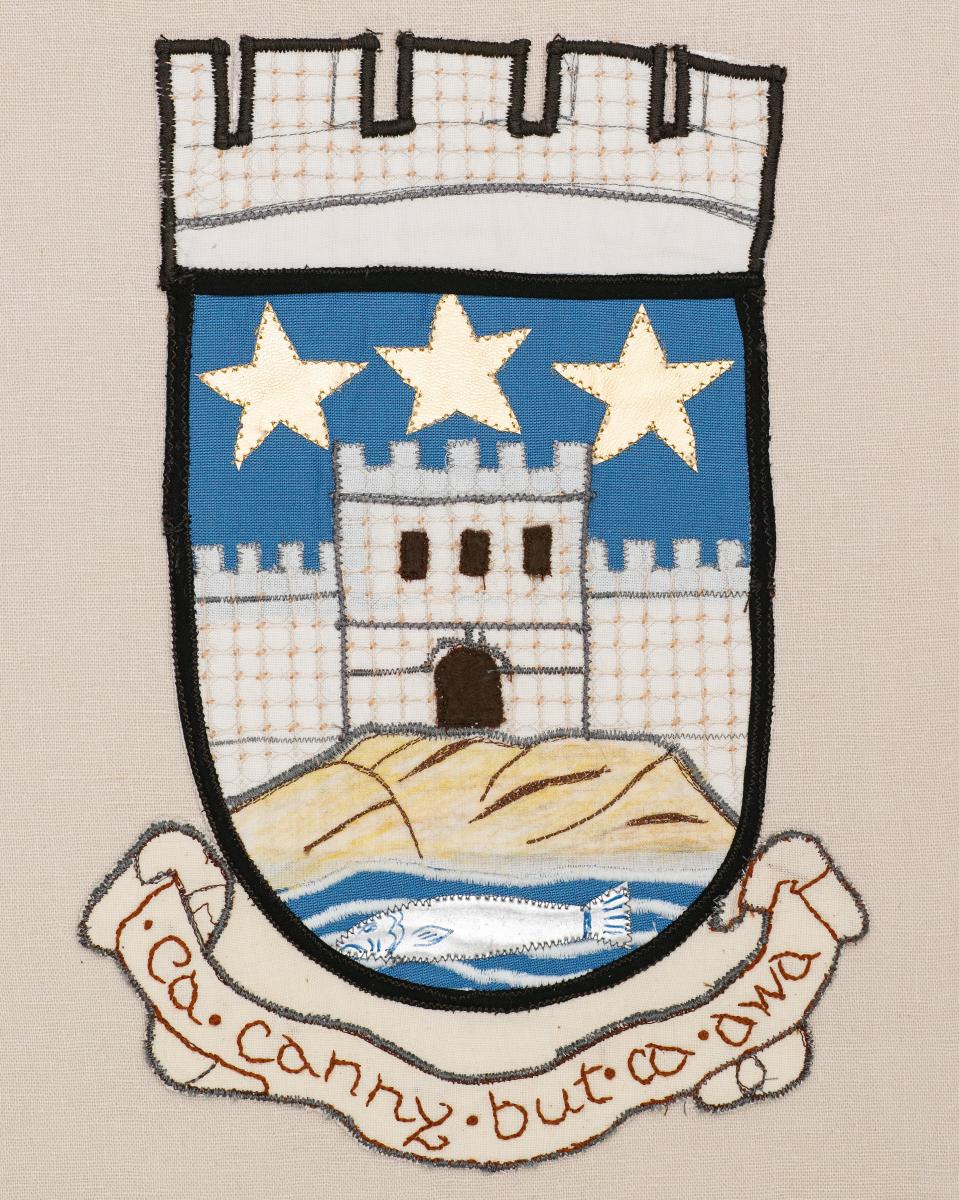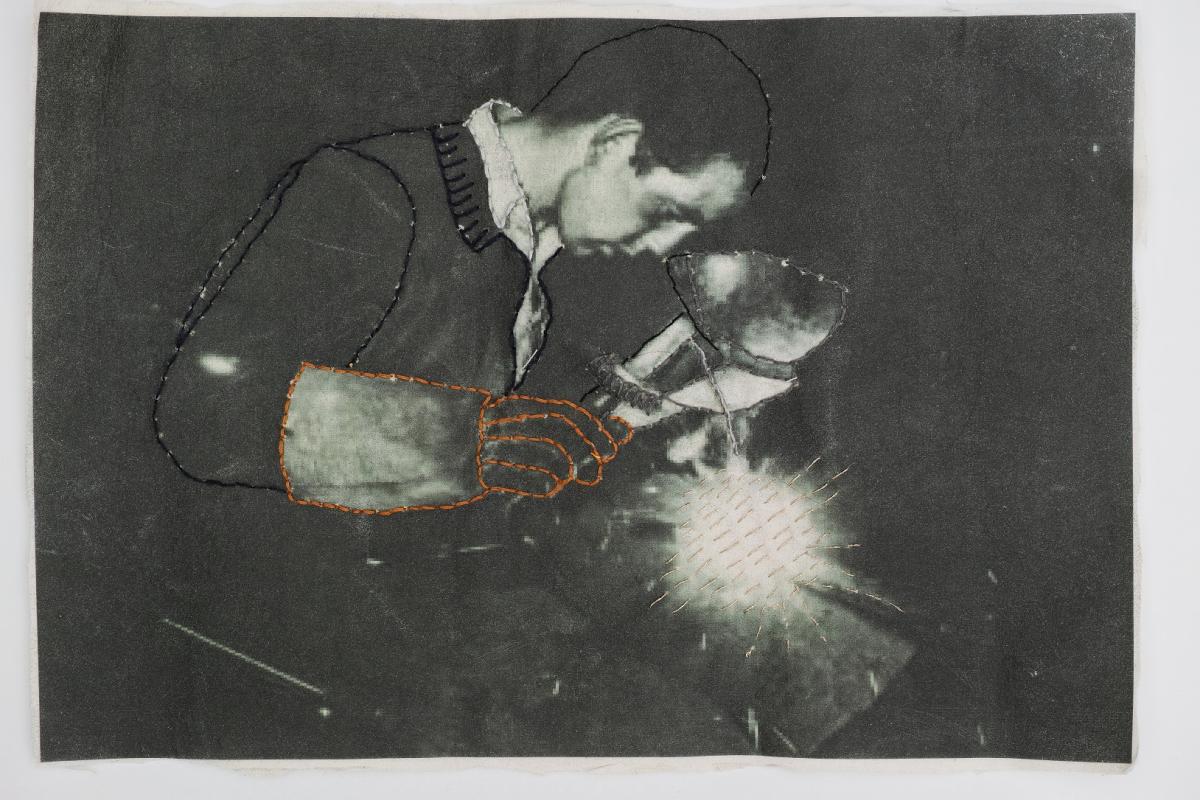A new exhibition will breathe fresh life into the phrase 'a stitch in time' thanks to a unique collaboration involving embroiderers and local history.
'Re-addressing the archive' is the name of the latest co-curated exhibition at Kirkintilloch Town Hall - on from 1 October to 11 December - which has been inspired by the area's rich heritage.
It is the result of a collaboration between artist/maker Myra Ostacchini and Kirkintilloch Embroiderers' Guild - bringing together the highly-developed needlework skills of the Guild with Myra's cross-disciplinary approach to textiles.
They were inspired by objects, photos and narratives from within the EDLC Archives and collections - including Lion Foundry patterns, plans and famous red telephone boxes, Roman history, fine lace and lappet work, temperance memories, Campsie Ware pottery and more.
The resulting works offer a contemporary take on heritage, developing traditional embroidery skills into new and diverse forms.
The exhibition also includes a newly-commissioned film on drawing and textile work by Myra.
A free opening event - including evening viewing session and artist talk - is being held at the town hall on Friday 5 October from 6.30pm-9pm.
Councillor Susan Murray, Vice Convener of Place, Neighbourhood & Corporate Assets, said, "I am delighted to welcome this new exhibition, which involves the very talented members of Kirkintilloch's Embroiderers' Guild in a unique collaboration with artist/maker Myra Ostacchini.
"It shows once again the importance of the EDLC Archives, which offer inspiration from the past on a range of subjects - from the Lion Foundry to Campsie Ware pottery."
Sandy Marshall, Chair of East Dunbartonshire Leisure and Culture (EDLC) Trust, added, "The co-curated exhibitions are proving extremely popular at the town hall, making good use of the wonderful heritage space on the first floor. It's also an opportunity to check out the permanent Made in Kirkintilloch exhibition - which shines a light on the area's past, present and hopes for the future."
Accompanying 'Re-addressing the archive', two free workshops will also be held in Kirkintilloch Town Hall (please note - places are free, but must be booked)
- Experimental Textiles - Saturday 20 October, 12.30-3.30pm

Artist Myra Ostacchini will reveal the different stages of development to produce a stitched object - including her stretched gauze technique, presented in large sculptures and small objects. The workshop will share practical experimental textile techniques, involving card weaving, colour and texture, to produce a small artwork for participants to take home. No previous experience required and suitable for beginners.
- Thinking Through Drawing - Friday 26 October, 12.30-3.30pm
Artist Myra Ostacchini will lead an investigation of drawing an archive object of your choice, experimenting with collage, colour and sensory drawing. There will be group discussions of how this connects with research, and artistic process and development. No previous experience required and suitable for beginners.
To book your free place, please e-mail culture01@eastdunbarton.gov.uk or call 0141 578 8224.
'Re-addressing the archive' is part of an arts and heritage learning programme created by EDLC Trust. It is open - as is the Made in Kirkintilloch exhibition - from 10am-4pm, Mon-Thurs.
Visit www.edlc.co.uk for more information or call 0141 777 3070.
Additional info:
'Re-addressing the archive' continues the year-long season of co-curated exhibitions at the town hall.
With a focus on the area's industrial heritage, individuals researched and responded to EDLC's extensive collection of objects, artefacts and photographs - creating a contemporary take on heritage through 2D and 3D embroidery works.
All of the works have been skilfully made by machine or hand, introducing people to the beauty and inherent magic of making - creatively re-imagining and re-addressing the archive.
Kirkintilloch Embroiderers' Guild participants included June Allison, Ruth Blakey, Ishbel Buck, Eleanor Cordiner, Pamela Diffin, Susan Gray, Jane Logan, Maris MacNab, Jean Pless and Louise Reid.
- June Allison's 'Railings' developed from her review of Lion Foundry pattern books and the many designs for decorative ironwork - from gates to railings and bandstands
- Jean Pless' richly-detailed 'Red Telephone Box', uses a diversity of stitches to relay evocative, highly-personal memories of contact with 'home'. In the days before mobile phones, the red telephone box was synonymous with calling family.
- Eleanor Cordiner's 'Lion' was inspired by a found piece of metal, which became the basis for an emblematic embroidered lion - a symbol of the foundry
- Pamela Diffin's 'Four Seasons' also takes inspiration from the Lion Foundry, specifically the Four Seasons pattern hanging in the Auld Kirk Museum
- Amongst the many images of the Lion Foundry in the Archives, Maris MacNab's work takes inspiration from a solitary photograph of a Lion Foundry worker
- The Lion Foundry figures too in the miniature work of Louise Reid and her highly-evocative 'Bandstand'. Detailed and intricate, it's a reminder of the town's Victorian era and richness of its social spaces.
- Temperance is the focus of another of Louise's works - her miniature 'Tea Set' - each object painstakingly wrapped and stitched, transporting us back in time and evoking memories of Kirkintilloch's dry period
- A piece of Campsie Ware relegated to the back of a shelf was rediscovered by Ishbel Buck during her research and offered inspiration for 'Bird', which evolved and was given new life through reverse appliqué, machine stitching and hand embroidery, combined with different fabrics to help illustrate the rich Campsie Ware colours and lustre
- Jane Logan's 'Mining Banner' is designed as a tribute to the mining communities of Kirkintilloch and their contribution to the cultural life of Scotland. It is a symbol recognising the 'gratitude' owed to miners and their families.
- Susan Gray's 'Caerpentalloch' goes back to a much-earlier history of the area and its rich Roman artefacts and connections
- The town's weaving is at the centre of Ruth Blakey's 'Lappet', which takes its inspiration from a 'delicate survivor' of Kirkintilloch's important weaving history. At one time there would have been many hundreds of weavers in the area, a number of them lappet makers and clippers.
- Artist/maker Myra Ostacchini explores the history of local weaving, mills and looms, foundries and ceramics. Her works, 'Th-red room', 'Kirkin-talisman' and the textile drawing '16.35M' all aim to bring Kirkintilloch's industrial past to life. 16.35M is based on Myra's mapping, measurement and scale of a former existing weaving room - now Wagtail Pet Supplies. It uses collected textiles from Kirkintilloch charity shops.
Follow us on Twitter @EDCouncil or like us on Facebook for the latest updates